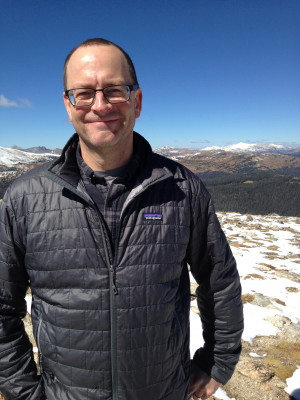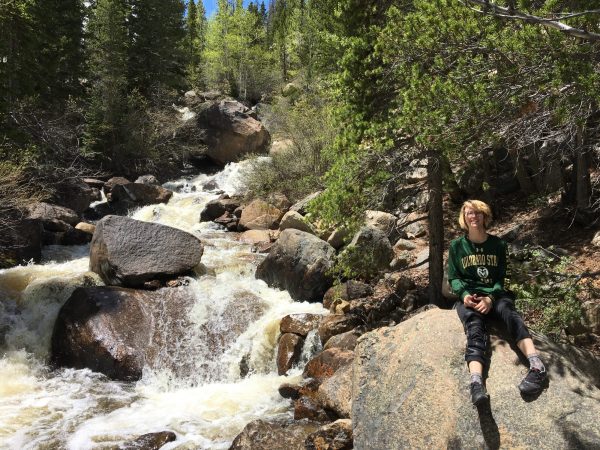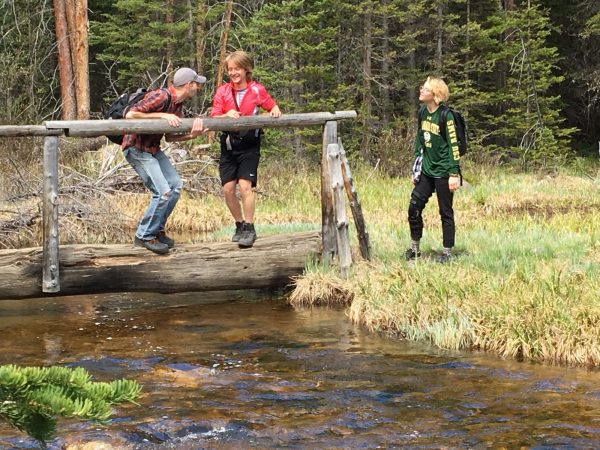“Water relates directly to questions about who we are, where we are, and why we are—that is, to fundamental questions of philosophy,” claims Ken Shockley, the Holmes Rolston III Chair of Environmental Ethics and Philosophy.
Shockley explains that our particular understandings and interpretations of water reveal our sense of identity (the who), our sense of place (the where), and our meaning and purpose in the world (the why). And, underlying all of these deeply human questions lies a central question of ethics—what does it mean to flourish in the world as a human being?
International Look at Water Issues: Climate Change

Associate Professor Ken Shockley is the head of a team of CSU faculty and graduate students attending the 24th session of the United Nations Climate Change conference. While in Poland, Shockley and the CSU delegation will gain a unique opportunity to observe international public policy negotiations around implementation of the Paris Agreement.
The quality of the water we encounter in our daily lives is one way to think about human flourishing and what it means to thrive in a particular place. “Water quality has a striking effect on all aspects of life,” explains Shockley. One of his research interests involves water quality, specifically the process of groundwater remediation. One feature of this process involves “an examination of different conceptions of what ‘success’ in water remediation looks like for different groups of people.” The varying ideas regarding success tell us much about identity, about who we are and how we understand our relationship to the world around us, and how different groups view themselves and their role in the world. He has been struck by the different ways water is viewed regionally in the US: “When New Yorkers hear that I work on water issues, they instantly think about pollution; by contrast, Coloradans think of water rights.” Both intuitions point to notions of flourishing and the significance of water in localized environments.
Shockley understands this difference in perspective as reflecting “very different conceptions of what it means to be a citizen in a place and how this affects different conceptions of flourishing.” He explains this with a story of contrasts. For some, like military and corporate stakeholders, groundwater remediation involves an investigation into the most economically, politically, and technologically feasible way to fix a problem with water quality. It is simply a matter of efficiency, under the very real constraints of technology, economics, and politics. By contrast, some urban stakeholders, simple citizens suffering the effects of groundwater pollution, see themselves as victims of injustice. Here, the issue is not one of fixing a technical problem, but of rectifying harm. Remediation becomes a moral issue. Responding to moral demands means ensuring that water is not compromised in the future, that violations of rights are rectified, that wrongs are addressed, and that perpetrators are duly disincentivized from polluting the water again.
In contrast to these questions of self-identity, the issue of stream restoration, another one of Shockley’s interests, brings forth a different set of concerns, namely those of ecology and place. The process of stream restoration addresses the channelization of streams to remove seemingly undesirable marshes and swampy lands. “In this process, the natural flow patterns of streams were compromised, streams became separated from their natural surroundings, and the ecology of streams was impaired. In the process of channelization, streams became a feat of engineering not a feat of nature.”
To address the damage resulting from the over-engineering of natural waterways, ongoing efforts attempt to return streams to a more ecologically sound state. Restoration involves “a sense of how we can be part of a place by fixing past mistakes, fixing the streams, and, at the same time, improving ecological sense and aesthetic value,” he says.
Shockley continues by describing how the process of stream restoration involves questions of how we can see ourselves as part of the local ecology and what we understand the “natural” local ecology to be. To what state we restore ecological sites reveals as much about our understanding of our environment as it does about what we take to be good and valuable and our ideals of nature. Shockley illuminates a further irony of this restoration: “The most successful attempts are the most deceptive because they appear to be the most natural—concealing the very work it takes to artificially return something to a ‘natural’ state.”
This process of destruction and restoration of streams reminds us that “water is a reflection of the chaotic consequences of our actions.” Shockley expounds: “Water requires us to think about change and flow and the ways in which different pressures—economic, political, and ecological—change the world and often have consequences that we cannot foresee.”
But beyond the economic, the political, and the ecological lies the aesthetic. Shockley speaks of “the beauty of teaching about water” and the direct and immersive experience of teaching at the CSU Mountain Campus: “When teaching environmental ethics up at the Mountain Campus, we think about how the ways we conceive of beauty and landscape are related to ecology and how these are framed by our understanding of water.”
Shockley illustrates with contrasting views of two water-based ecosystems: a swamp and a rocky mountain stream. The swamp is often seen as something ugly, undesirable, and problematic, whereas the stream is viewed as beautiful and idyllic. He interprets this dichotomy: “Our perception of these two different landscapes tells us little about ecology and much about our conceptions of beauty. However, value, a central focus of environmental ethics, surely lies somewhere in between.”
And, likewise, water—and all our ecological, economic, political, ethical, and beautiful interpretations—lies at the heart of what it means to flourish in our own place in the world.




